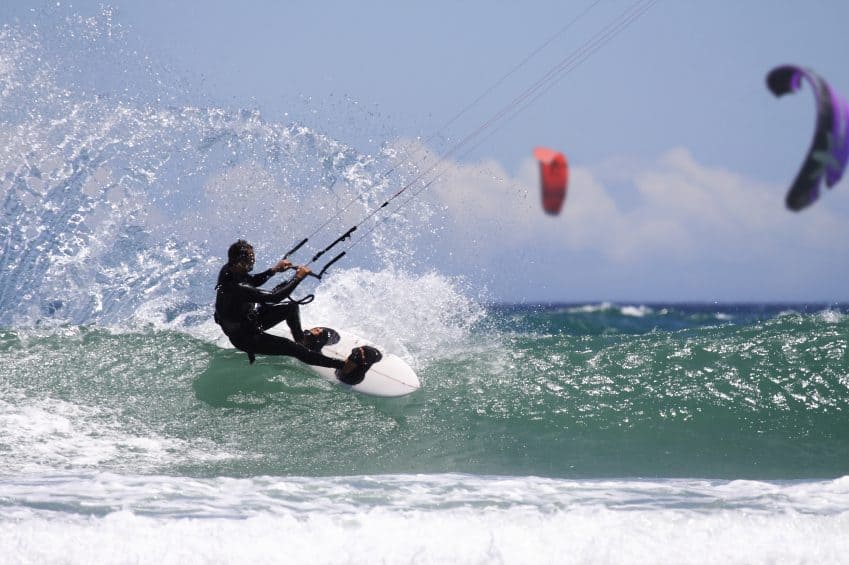We came a long way in a relatively short time in the snowboard history. Since the early no snowboarders allowed to the fact that snowboarding in responsible for todays revival of skiing. The story on how it all began.
First Kite Ever?
The Chinese are credited with using kites for propulsion in the 13th century.
Kiting To Avoid Horse Taxes
In the 1800s George Pocock used kites of increased size to propel carts on land and ships on the water, using a 4-line control system – the same system in common use today. Both carts and boats were able to turn and sail upwind. The kites could be flown for sustained periods. The intention was to establish kitepower as an alternative to horsepower, partly to avoid the hated “horse tax” that was levied at that time. In 1903, aviation pioneer Samuel Cody developed “man-lifting kites” and succeeded in crossing the English channel in a small collapsible canvas boat powered by a kite.
New Materials
In the late 1970s the development of Kevlar then Spectra flying lines and more controllable kites with improved efficiency contributed to practical kite traction. In 1978, Ian Day’s “FlexiFoil” kite-powered Tornado catamaran exceeded 40km/hr.
Through the 1980s there were sporadic and occasionally successful attempts to combine kites with canoes, ice skates, snow skis, water skis and roller skates.
First Inflatable Kite
Two brothers, Bruno Legaignoux and Dominique Legaignoux, from the Atlantic coast of France, developed some kite designs for kitesurfing in the late 1970s early 1980s and patented the first inflatable kite design in November 1984, which has since been used by many companies to develop their own products.
In 1990, practical kite buggying was pioneered by Peter Lynn at Argyle Park in Ashburton, New Zealand. Lynn coupled a three-wheeled buggy with a forerunner of the modern parafoil kite. Kite buggying proved to be very popular worldwide, with over 14,000 buggies sold up to 1999.
Modern Day Kitesurfing
The development of modern day kitesurfing by the Roeselers in the USA and the Legagnoixs in France carried on in parallel to buggying. Bill Roeseler, a Boeing aerodynamicist, and his son Corey Roeseler patented the “KiteSki” system which consisted of water skis powered by a two line delta style kite controlled via a bar mounted combined winch/brake. The KiteSki was commercially available in 1994. The kite had a rudimentary water launch capability and could go upwind. In 1995, Corey Roeseler visited Peter Lynn at New Zealand’s Lake Clearwater in the Ashburton Alpine Lakes area, demonstrating speed, balance and upwind angle on his ‘ski’. In the late 1990s, Corey’s ski evolved to a single board similar to a surfboard.
Laird Hamilton
In 1996 Laird Hamilton and Manu Bertin were instrumental in demonstrating and popularising kitesurfing off the Hawaiian coast of Maui.
More Development
In 1997 the Legaignoux brothers developed and sold the breakthrough “Wipika” kite design which had a structure of preformed inflatable tubes and a simple bridle system to the wingtips, both of which greatly assisted water re-launch. Bruno Legagnoix has continued to improve kite designs, including developing the bow kite design, which has been licensed to many kite manufacturers.
In 1997, specialist kiteboards were developed by Raphaël Salles and Laurent Ness. By 1998 kitesurfing had become a mainstream sport, and several schools were teaching kitesurfing. The first competition was held on Maui in September 1998 and won by Flash Austin.
By 1999 single direction boards derived from windsurfing and surfing designs became the dominant form of kiteboard. From 2001 onwards, wakeboard style bi-directional boards became more popular.
The current speed record over a 500 meter (1,640 ft) course, held by Olaf Marting, is 77.4 kilometers per hour (41.79 knots). Sjoukje Bredenkamp from South Africa holds the female record at 37.26 knots.
New speed record:

